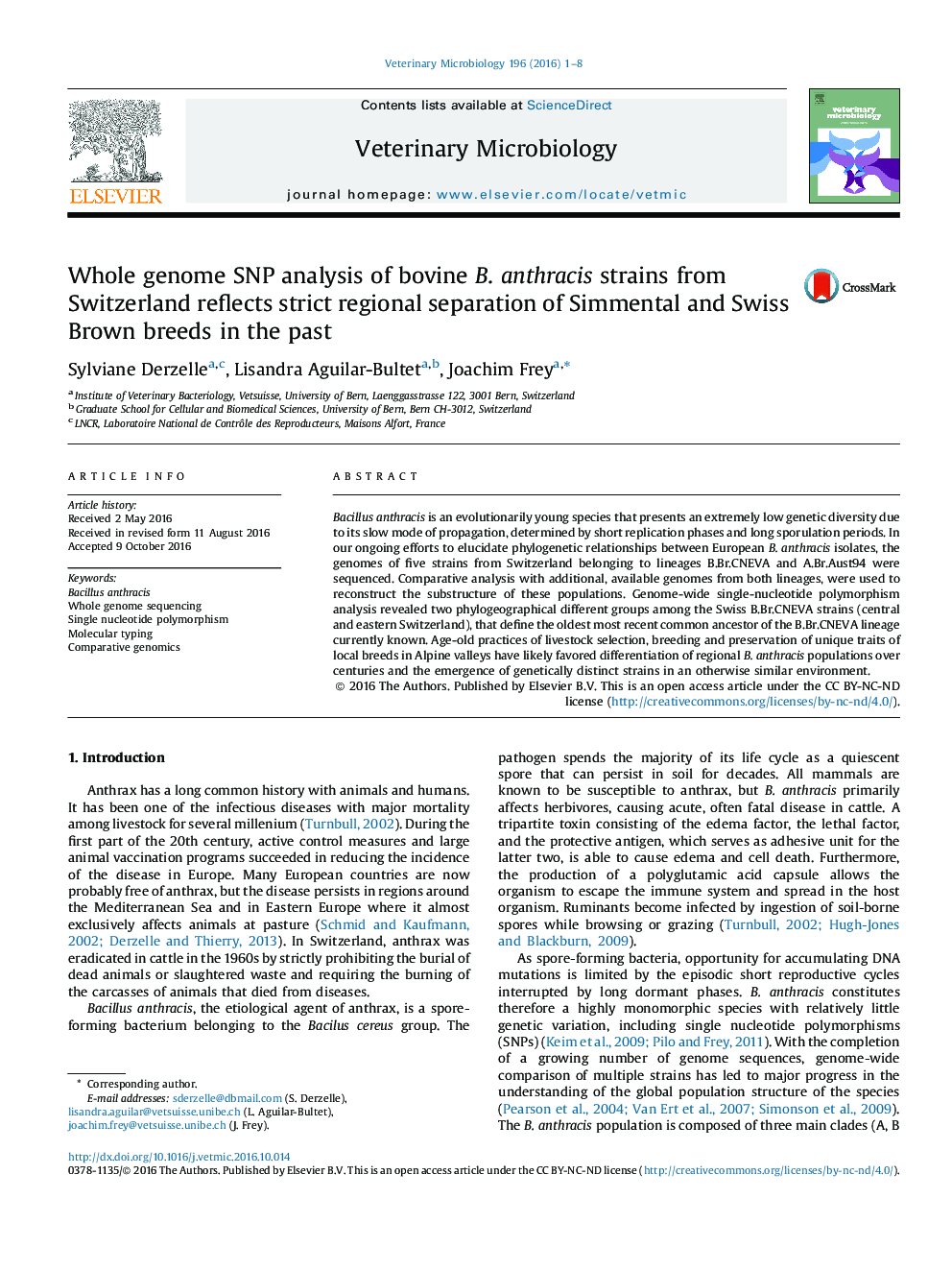| Article ID | Journal | Published Year | Pages | File Type |
|---|---|---|---|---|
| 5545473 | Veterinary Microbiology | 2016 | 8 Pages |
Abstract
Bacillus anthracis is an evolutionarily young species that presents an extremely low genetic diversity due to its slow mode of propagation, determined by short replication phases and long sporulation periods. In our ongoing efforts to elucidate phylogenetic relationships between European B. anthracis isolates, the genomes of five strains from Switzerland belonging to lineages B.Br.CNEVA and A.Br.Aust94 were sequenced. Comparative analysis with additional, available genomes from both lineages, were used to reconstruct the substructure of these populations. Genome-wide single-nucleotide polymorphism analysis revealed two phylogeographical different groups among the Swiss B.Br.CNEVA strains (central and eastern Switzerland), that define the oldest most recent common ancestor of the B.Br.CNEVA lineage currently known. Age-old practices of livestock selection, breeding and preservation of unique traits of local breeds in Alpine valleys have likely favored differentiation of regional B. anthracis populations over centuries and the emergence of genetically distinct strains in an otherwise similar environment.
Keywords
Related Topics
Life Sciences
Agricultural and Biological Sciences
Animal Science and Zoology
Authors
Sylviane Derzelle, Lisandra Aguilar-Bultet, Joachim Frey,
